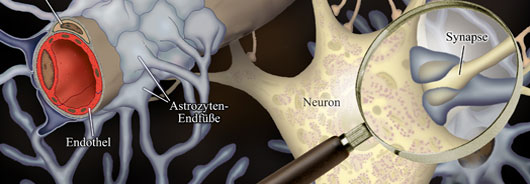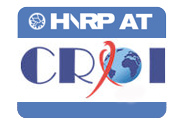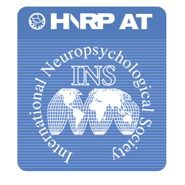Investigator Resources
Investigator Resources
Participant Accrual and Retention Resources
Participant Accrual and Retention (PAR) Resource Group Overview
The Participant Accrual and Retention (PAR) Resource Group provides consultation and technical support to Investigators who are seeking relevant, hard-to-reach and/or well-characterized research subjects. The resource group assists Investigators in rapidly and efficiently initiating studies and in successfully meeting subject recruitment goals. The group provides consultation and study design to enhance efficient resource utilization. Through technical support, the group works to ensure the overall quality of the participant’s research experience and provides Investigators with a mechanism to provide feedback regarding study findings to participants and to the local communities. Finally, the resource group works with Investigators to monitor human subjects regulatory requirements and ensure compliance.
Organization
The PAR Resource Group is managed by a senior Investigator (J.H. Atkinson, M.D.) and a Manager (Roberto Gallardo). Dr. Atkinson is a Professor of Psychiatry and provides overall direction and supervision of the resource team. Mr. Gallardo directly oversees all activities related to human subject accrual and retention, visit scheduling, and human subject regulatory compliance. Personnel include Recruiters, Schedulers, and Intake Visit Monitors. Staff members are dedicated to the specific studies and projects that support their efforts, however the group derives efficiencies and synergistic benefit from being collocated and co-managed.
Resources provided
The PAR Resource Group provides new and existing Investigators with consultation and technical support. Initial consultation may address study design and feasibility. Once a study is funded, technical support is available for identifying, screening, and enrolling specific hard-to-reach target groups. The resource includes a repository of prospectively gathered demographic and contact information on current and potential future research subjects. The group provides Investigators with assistance in assuring human subjects regulatory compliance and provides a mechanism for Investigators to acquire feedback from participants (for example, through focus groups) and community members (via a Community Advisory Board) for the purpose of quality assurance. Upon conclusion of a study, the group can facilitate dissemination of study findings to participants and members of the local community.
Scientific Consultation
The PAR Resource Group provide consultation on recruitment methodology including state-of-the art field techniques and methods for developing and maintaining mutually supportive referral networks with health care providers, community service agencies, and local opinion leaders. The group provides Investigators with information on how to meet the challenges inherent in identifying, enrolling, and retaining scientifically relevant and diverse groups of participants. Consultation may include assistance in creating study specific educational and promotional materials.
Trainees
Training is available in study promotion and outreach methodologies, subject identification, subject screening, visit scheduling, and mitigation of barriers to participation.
Cross-project Issues
The PAR Resource Group coordinates a regular participant clearinghouse conference, attended by staff of the PAR group and each of the HNRC-associated research cores. In the course of the conference, PAR staff provide updates to team members regarding new recruitment targets, progress towards achieving existing goals, opportunities and challenges in the community, etc. In addition, staff members are trained to evaluate potential eligibility of all active studies and make appropriate internal referrals. If an individual is eligible for another study, the staff member who performed initial screening may re-contact that individual to determine whether he/she willing to receiving information on another project. A potential participant will only be referred to another study when authorization has been obtained.
Contact the PAR Resource Group
For more information about the consultation and technical support the PAR Group can provide or to access PAR resources, please contact the PAR Manager, Roberto Gallardo (This email address is being protected from spambots. You need JavaScript enabled to view it.).
PAR Resource Group Technical Details
General Approaches/Methods
Over the past 20 years, the PAR group has been dedicated to enrolling and retaining informative cohorts which, by reflecting the evolving epidemiology, comorbidities, and treatment of HIV, serves as a resource to enable investigators to efficiently address critical questions in the field of neuroHIV. Such responsiveness and relevance is the product of interactive communication between investigators, recruitment leadership and staff, and the HIV community. PAR personnel conduct community education and study promotion using social marketing and outreach in a wide range of community venues. PAR also strives to develop a genuine partnership with the HIV communities. In line with modern models of participatory research, PAR works to maintain open, consistent, and deliberate communication among all stakeholders. These types of activities are key to enrolling participants, establishing a pool of potential participants, and keeping the community engaged in the research.
The PAR group utilizes a long-range strategy of encouraging research-naïve individuals to contemplate future participation in scientific studies. This serves to enrich the pool of potential participants. The mainstays of maintenance in the cohort continue to be the principles outlined by Robins, Boice, and Showstack and co-authors, appropriately revised for HIV and cultural sensitivity, and updated for difficult-to-track samples by Anglin and colleagues. These principles emphasize education and motivation for retention at the time of enrollment and at each follow up point, identifying personal contacts, and obtaining permission to use public records to help track whereabouts (e.g., directories, locator agencies), and personalized on-going contact. The PAR group employs a full range of recruitment methods, maintaining an interactive presence in the community rather than relying heavily on mass media advertising campaigns. We distribute flyers, brochures, and posters relating to HNRP-associated study opportunities.
PAR group staff also participate in networking meetings with community members, peer advocates and opinion leaders, meet regularly with representatives of HIV care clinics and service providers, promote research at major community events, and organize and facilitate educational meetings for members of the community to provide information about HNRP research activities and solicit community input, advice, and feedback annually. Enrolled participants are asked to authorize contact by mail. If authorized, we provide information via newsletters, cards, invitations, announcements, amounting to at least four contacts by mail annually. Outreach staff are members of the targeted communities (e.g., the Recruiter/Tracker team includes men and women; homosexuals and heterosexuals; African Americans, Caucasians, and Hispanics; people in substance recovery; and people living with HIV).
Quality Assurance
The PAR Resource Group will track the involvement of longitudinal participants in various HNRP associated studies to monitor burden associated with time and effort in order to minimize the potential for participant burn-out, as well as to ensure that participants are not co-enrolled in studies that may be a cross-purposes (e.g., a clinical trial for treatment of neurocognitive disorder and a different study in which neuropsychological functioning is an outcome).
Laboratory, Pharmacology & Biomarkers Resources
Laboratory, Pharmacology & Biomarkers Resource (LPBR) Overview
The LPBR oversees the laboratory components of HNRP-associated projects. Depending on the needs of each individual project, the LPBR collects, processes, stores and makes available for future research, samples of plasma, serum, CSF and CSF cell pellets, urine, and genetic material (e.g. PBMCs). The LPBR coordinates routine clinical laboratory testing of these samples and also provides the HNRP with the capacity to measure ARV medication concentrations, immune mediators, and other biomarkers in CSF and blood. This group also facilitates genetics and genomics studies. Although this work is primarily performed on samples from human research participants, the group also performs some work using animal samples.
Organization
The LPBR is housed within the Neuromedical Resource Group (NMRG). The same leadership team directs the work of the LPBR and NMRG: Dr. Ronald Ellis (NMRG Director), a neurologist with subspecialty expertise in neurobehavior and HIV/AIDS; Dr. Scott Letendre (Co-Director), an infectious disease specialist with expertise in neuroAIDS and Hepatitis C infection; Terry Alexander (NMRG Manager), a clinical research nurse with over ten years of experience in applying neuromedical research methods in local and international settings. Within this NMRG structure, Debra Rosario, MPH, directly manages LPBR activities and staff, including laboratory assistants and research associates trained in phlebotomy and handling biological specimens.
Resources provided
LPBR resources include:
- Personnel trained in the collection and processing of participant-derived samples.
- Laboratory data already collected from HNRP-associated projects (with consents for data sharing) and the ability to obtain new laboratory data through retrospective testing of existing specimens or collection and testing of new specimens.
- Storage and management of more than 500,000 specimens collected from subjects with comprehensive neuromedical and neuropsychological data who have participated in HNRP-associated studies.
- Substantial experience in measuring and interpreting biomarker and pharmacology concentrations in relationship to HIV, methamphetamine abuse and other related conditions.
Scientific Consultation and Trainees
Although scientific consultation and training activities may be laboratory specific, these activities are addressed at the larger NMRG level.
Cross-project Issues
In addition to using NMRG methods for addressing cross-project issues, the LPBR subgroup meets weekly to address all laboratory issues including standardization of assays and methodologies across projects. A meeting focused on pharmacology issues takes place monthly.
Contact the LPBR
For additional information or to access LPBR resources, please contact LPBR manager, Debra Rosario (This email address is being protected from spambots. You need JavaScript enabled to view it.).
LPBR Technical Details
General Procedures
Processing of Participant-Derived Blood and CSF Samples. Specific processes depend upon the details of each research protocol. But in general blood and CSF are collected, processed and separated, and aliquotted for storage or transfer to multiple clinical and research laboratories. Blood, collected by phlebotomist, is sent to UCSD clinical laboratories or Lab Corp (San Diego, CA) for hematology, chemistry, T-lymphocyte subset enumeration by flow cytometry, and HIV RNA quantitation by Roche PCR ultrasensitive assay (lower limit of detection 50 copies per mL). CSF,collected by the physicians or nurses, is sent to UCSD labs for cell count, glucose and total protein measurements, and HIV RNA quantitation. Both blood and CSF can be assayed in-house for ultrasensitive HIV RNA quantitation by Abbott PCR ultrasensitive assay (lower limit of detection 40 copies per mL), rapid screenings of HIV and HCV (Medmira, Nova Scotia, Canada), syphilis (RPR), urine toxicology, and specialty assays such as measurements of drug and biomarker concentrations. Urine specimens are screened for neuroactive drugs at the time of cognitive testing by a 10-panel drug screen card (Rapid Response, Biotechnostix Inc., Markham, Canada) that immediately detects exposures to recreational or prescription drugs.
|
Table 1. Typical sample volumes stored by at each HNRP-associated study visit. Volumes may vary based on the requirements for each study supported by the NMRG. |
|||
|
Sample Type |
Aliquot size x Number |
Approx. Total |
Temp. Stored |
|
Serum |
1.0 x 5 |
5 mL |
-20°C |
|
EDTA Plasma |
1.0 x 10 |
10 mL |
-70°C |
|
PBMCs / DMSO |
1.8 x 2 |
3.6 mL |
-150°C |
|
CSF Supernatant |
0.5 x 6 |
3 mL |
-70°C |
|
CSF Supernatant |
1.0 x 5 |
5 mL |
-70°C |
|
CSF Cells |
0.5 x 3 |
1.5 mL |
-150°C |
Labeling and Tracking. The LPBR carefully tracks all processed specimens. Barcode labels identify precise freezer locations (freezer number, rack number, box number). These codes are tracked by a web-based data entry program, which was designed and developed by the HNRP’s Data Management and Information Systems Resource. Entry of sample data by barcode also facilitates automatic and immediate update of the fluids database; accounting of sample use when a sample is processed or retrieved; and prioritization and appropriate utilization of samples. Disposition of stored fluid samples is readily defined by this tracking system. When aliquots are required for research assays or shipment to collaborators, samples are logged out and the recipient recorded. If a previously removed sample is returned after partial use, it is assigned a new location and its history noted in the database. Thus, this system enables tracking of the history of individual samples.
Specimen Storage. The HNRP Specimen Storage Facility is comprised of -20°C, -70°C, and -150°C freezers that house all HNRP-associated biological specimens. These freezers are monitored 24 hours a day via a computerized validated environmental monitoring system that is capable of automatically phoning key personnel in the event of a power failure or freezer mechanical failure. All freezers have a posting on them listing personnel to call in the event of an emergency. The Standard Operating Procedures outline steps to take in the event of a power failure and/or freezer mechanical failure. All staff and Principal Investigators have been trained to respond to the freezer alarm system and have been given instruction of how to proceed if there is a situation requiring immediate action. Coverage is always designated to account for vacations and holiday schedules.
Participant identification, specimen procurement, labeling and confidentiality. Laboratory or clinical personnel verify the subject’s name, study identifier, visit, and date prior to procuring fluids. Local site personnel clearly label the remaining specimens with this unique identifying information prior to freezing.
LPBR personnel performance. Copies of LPBR personnel training records are maintained. Laboratory personnel record processing times for the fluids obtained from each subject on clinical report forms and monitor these forms periodically to ensure that processing times are within 2 hours from procurement to either shipment or freezing. Efforts are made to avoid unnecessary thawing of specimens and prolonged periods at room temperature since they may adversely affect the integrity of the constituents of biologic samples.
Laboratory instrumentation, reagents, and analytic test procedures. Each clinical lab utilized by the LPBR, whether local or central, is accredited by the College of American Pathologists and or Clinical Laboratory Improvement Amendments. The designated, commercial lab is responsible for maintaining its instrumentation, reagents, and test procedures. UCSD’s Environmental Health and Safety Office monitors intramural research reagents and test procedures. Each lab verifies that they are maintaining calibration and accuracy of their instrumentation.
Turnaround times. Clinical lab results are delivered by the central, commercial lab in electronic format to the LPBR, facilitating easy monitoring of turnaround time.
Accuracy of final results. When aberrant lab results are found, their occurrence is tracked. LPBR personnel also track when such results require repeat processing. Errors are reviewed annually to identify problems with specific assays or procedures and performance of the central, commercial lab.
Complete documentation of all procedures involved in obtaining final analytic results. Documentation is maintained and monitored in a systematic manner by the central lab in the process of QA, it is important to document the effectiveness of quality control measures. The written record of quality control activities for each procedure or function should also include details of deviation from the usual results, problems, or failures in functioning or in the analytic procedure, as well as any corrective action taken in response to these problems.
Additional measures to support quality of processing and uniformity results will include:
- When thawing is necessary for processing, residual volumes that are returned to storage are marked as previously thawed and a notation will be recorded in the database.
- The accuracy of the specimen database is continually tested as groups of samples are withdrawn for specific assays. Inconsistencies (i.e., failure to find a sample in its stated location) are reported and the database promptly corrected.
- Developmental and Pilot Studies. The NMRG maintains a record of pilot studies supported, funded grants utilizing, and publications emerging from provided samples
Laboratory Operations Manual
The LPBR has developed a Laboratory Operations Manual as a resource for Laboratory Assistants and Clinical Research Assistants that includes general policies and guidelines pertaining to personnel, standard operating procedures and QA. Specifically, the Operations Manual highlights key elements of the Biomarkers Laboratory with regard to Assay Protocols, Data Collection and Analysis, Business and Administration and an extensive QA Program that includes validation, certification and evaluation of procedures, equipment and personnel.
Biomarker Quality Assurance (QA)
The Biomarker QA program incorporates several elements, including verification of specimen labeling; tracking of laboratory personnel performance; certification of laboratory instrumentation, reagents, and analytic test procedures; assessing precision and accuracy of final results; entry of final results into the central database; and complete documentation of all procedures involved in obtaining final analytic results. To assess precision of our methods, we assay specimens in duplicate, repeating measurements that have coefficients of variation greater than 20% (~5% of assays), and repeating 10% of all biomarker assays to assess operator and batch consistency.
Statistics Resources
Resource Group Overview
The Statistics Resource Group (SRG) provides statistical assistance to researchers, trainees, faculty, and staff participating in HNRP-related research. Members of the group collaborate with investigators on study projects at all stages of the research process, including hypothesis-generation, grant-writing, sample size justifications, and development of data analysis plans. Statisticians not only analyze data with known methods but also develop, program, and implement novel statistical procedures. The Statistics Group continues involvement in a study throughout the publication and presentation of findings and is dedicated to collaborative partnerships with and education of involved investigators, trainees, and staff.
Organization
The SRG currently consists of 5 statisticians. The group director Dr. Ian Abramson is a statistician and has been appointed as Professor of Mathematics (currently vice-chair in that department) since 1981. He has always had a strong interest in applications of statistics in biomedicine, and has been continuously involved in the HNRP, and its predecessor the HNRC, since its inception in 1989. Dr. Florin Vaida, the co-director, is an Associate Professor in the Division of Biostatistics and Bioinformatics with extensive experience in the areas of HIV and NeuroAIDS. The other three members are Reena Deutsch, PhD, Tanya Wolfson, MA, and Anya Umlauf, MS.
Resources provided
The SRG provides extensive support in planning and executing research studies by offering consultations and assistance on research projects, ranging from just a quick response to a straightforward statistical question, to intensive, complicated statistical analyses and documentation of methods and results in manuscripts submitted for publication and conference presentations. Types of services offered by the SRG include assistance with the following tasks:
- Design of experiments and observational studies
- Power analysis, sample size calculations
- Preparation of statistical analysis plans
- Writing-up grant proposals
- Execution of data analysis
- Development and implementation of innovative statistical methods
- Co-writing manuscripts
- Formatting tables and figures for manuscripts and abstracts
- Statistical programming
- Overseeing data quality for ongoing studies
- Submitting reports to data and safety monitoring boards (DSMBs)
- Basic and advanced statistical training
Trainees
The SRG offers basic and advanced study design, statistical, and software/programming training to HNRP-associated undergraduate and graduate students, trainees, fellows, researchers and staff. One-on-one consultations on various topics and methods are available by appointment or on a walk-in basis. The group also offers formal training and presentations on select topics during regularly scheduled meetings or as separately organized seminars. Assistance and training can be provided for using JMP, R, SPSS, and other statistical software. In addition, the Statistics Group may offer internships to undergraduate and graduate-level statistics students. Trainees are encouraged to contact a statistician in the early stages of their studies.
Cross-project Issues
The SRG holds regular meetings to discuss new and ongoing projects. These meetings are used to prioritize tasks and link specific statisticians to studies based on experience, area of interest, investigator preferences, workload, and deadlines. Statisticians are often in attendance at meetings of various projects and workgroups to offer timely assistance with questions and new issues that may arise.
Contact the Statistics Resource Group
For general information on assistance and resources provided by the Statistics Resource Group or to request services or a consult, please contact This email address is being protected from spambots. You need JavaScript enabled to view it..
Research Opportunities

The HIV Neurobehavioral Research Program is dedicated to multi-disciplinary research and strongly encourages collaborative studies with external investigators. Training opportunities are also available.
The HNRP serves as the umbrella organization that provides broad scientific and programmatic leadership for multi-disciplinary research programs related to the neurocognitive and psychiatric impact of HIV/AIDS. In many instances these programs gather comparable neuromedical, neurocognitive, and laboratory data.
Although the HNRP does not at present have available a publicly searchable database, we do have an extensive database on both human subjects and animals that include, for humans: background history, neuromedical examinations, neurocognitive testing, laboratory measures, and in some instances more advanced neuroimaging and behavioral data.
We welcome external investigators who may wish to take advantage of this dataset, and anyone interested should contact This email address is being protected from spambots. You need JavaScript enabled to view it. or submit a request form electronically here. We will assign one of our staff or faculty experts to discuss with you what your interests are, and how we may be of assistance. Ideally, we would encourage establishment with external scientists a collaborative model such that we might pursue interesting feasibility studies together with the idea of generating pilot information that would inform a more mature application to NIH.
Research Collaborations
HNRP investigations encompass research in neurology, neuropsychology, psychiatry, imaging, neuropathology, neurobiology, infectious disease, virology, immunology, and other disciplines. Collaborations with both external junior and senior investigators are welcomed. If you would like to know more regarding the possibility of collaborating with HNRP investigators, please contact This email address is being protected from spambots. You need JavaScript enabled to view it..
NeuroAIDS Training
The HNRP offers several options for investigators interested in NeuroAIDS training. Please see Education & Training for more information.











